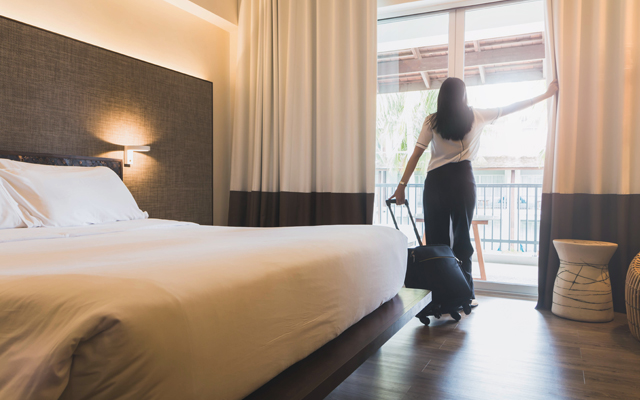Bala Selvam, regional security manager, International SOS, advises on the types of risks business travellers face in their accommodation overseas, and how organisations can make use of ISO 31030 to better select safe and secure accommodations

As the festive period high slowly wears off, organisations must plan their business travels for the rest of the year. With accommodation options offering discounted fares, promotions and deals to sell as many stays, it is not surprising that January is usually reported to be the busiest month for travel bookings.
However, organisations should not just look at the financial side, but also consider the safety and security of the accommodation options for their business travellers.
For a start, four in 10 travellers worry about hotel staff inadvertently giving their room key or their confidential information to strangers, and disruptions caused by the actions of other guests.
Hence, how can organisations ensure the safety and security of their business travellers when selecting accommodation options in their business travel policies?
What are the accommodation risks that business travellers may face?
Having their confidential information shared with strangers and disruptions caused by other guests are some of the risks that are associated with the accommodation options of business travellers. However, this is just the tip of the iceberg in the accommodation risks that they may face. Here are some other risks.
Poor air quality: Airborne diseases can easily spread and infect business travellers if their accommodation options are not well-cleaned or have poor ventilation systems. This can lead to illnesses such as influenza, Covid-19, tuberculosis and pneumonia.
Criminal activity: Accommodation providers must continue to balance convenience, customer service and ensuring a proper duty of care to their guests in ensuring their safety and security during their stay. Proper lift and room access control measures, surveillance systems and vigilant staff play a critical role in keeping guests in an accommodation safe from malicious actors and deterring criminal activity from occurring in the premises.
Geopolitical and environmental risks: Civil unrest, lone wolf attacks and extreme weather events are getting more frequent and dangerous, endangering the safety and security of travellers. Accommodation options must have appropriate measures to protect its guests from direct threats and indirect secondary effects from an incident. Having robust checking mechanisms for IED (improvised explosive devices) for locations which have terror-related incident threats is key while the property must possess critical backup systems to deal with inclement weather, power outages and flooding in the vicinity.
What should organisations do then?
Organisations can take steps to offer safer and more secure business travels through accommodation evaluation, making use of real-time intel and accommodating individual traveller profiles.
Accommodation evaluation: Accommodations require more than just standard security measures; a one-size-fits-all approach is often insufficient. Instead, a layered security strategy should be adopted, considering factors like the location’s risk level and the threat environment in the vicinity. For high-risk locations, it is recommended for organisations to carry out regular physical assessments of the accommodation to ensure the security measures are adequate in overcoming the threats in its immediate vicinity. The risk landscape of the accommodation should be assessed regularly in conjunction with an expert.
Making use of real-time intel: Organisations need to integrate up-to-date location-specific information into their travel risk management plans. Through dynamic itinerary tracking, organisations can check in with their business travellers if they require assistance, identify the exposure of crisis that they may be facing and communicate with them to facilitate repatriation services if needed.
Individual traveller profiles: Organisations need to evaluate the gender, religion, and health vulnerabilities of their business travellers, and whether the accommodation option is suitable for them. The proximity to medical facilities with an appropriate level of care for the traveller’s health conditions is as essential as having appropriate security measures in an accommodation for a solo female traveller.
How will organisations know if their business travel policies are sufficient?
Organisations can make use of the ISO 31030. It is an internationally recognised guideline, to provide a structured approach to the development, implementation, and evaluation of business travel policies in a continuous improvement cycle.
Leveraging ISO 31030’s best practices as a foundation is a good starting point, but establishing an effective business travel policy in conjunction with the organisation’s risk appetite and profile demands substantial time and effort. By gaining a deeper understanding of the risks faced by business travellers and identifying proactive measures, organisations can take proactive steps to enhance the safety of their business travel journey and ensure the effective execution of an employer’s duty of care obligations.
 Bala Selvam is a regional security manager at International SOS.
Bala Selvam is a regional security manager at International SOS.





















